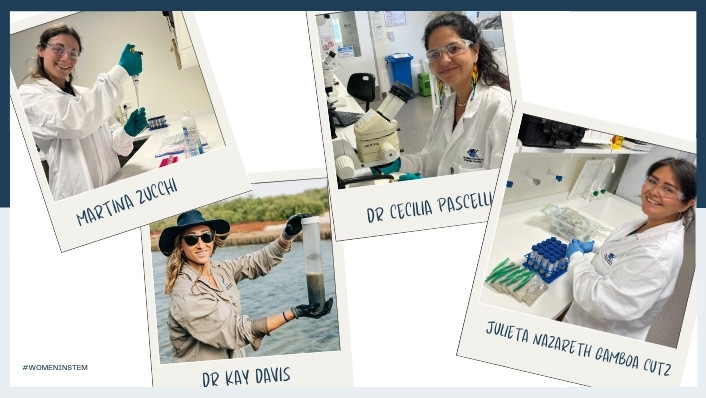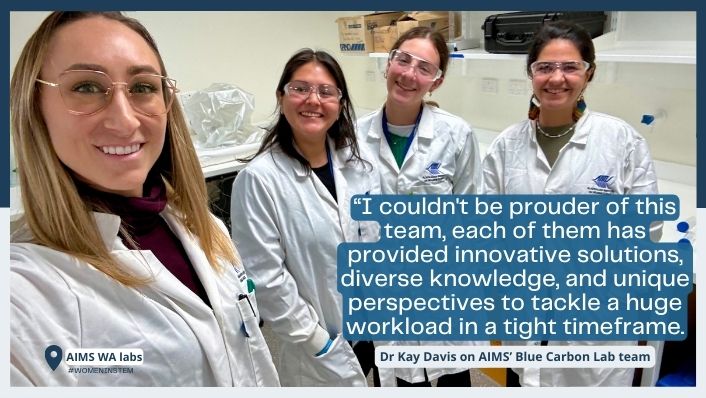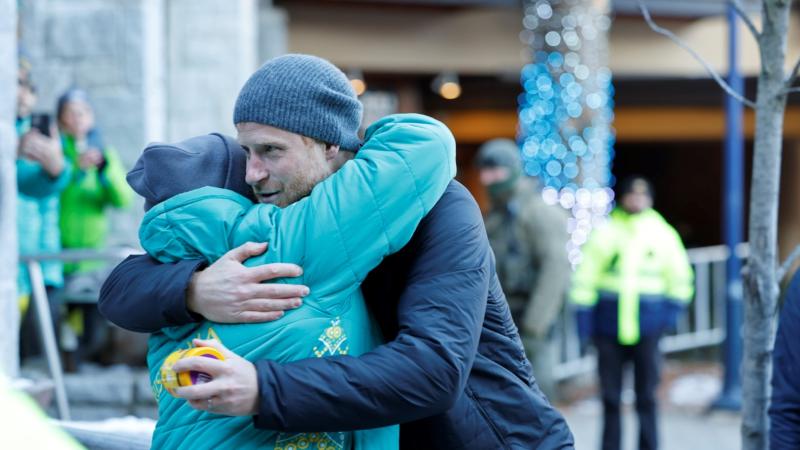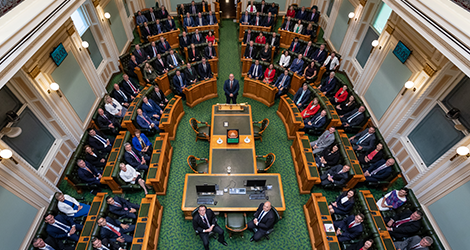Celebrating International Women and Girls in Science Day, February 11, 2025
An all-women science team is playing a key role in investigating how much carbon is buried across the Northwest Shelf of Western Australia and how it could be used to help reduce the severity of climate change.
When marine plants photosynthesise, they take carbon dioxide out of the air and the water. Blue carbon ecosystems such as mangroves and seagrass meadows can durably store that carbon for long periods of time, helping to provide a buffer against the effects of climate change by locking the carbon away from the atmosphere.
The soil carbon profiling team is part of the $20 million Blue Carbon Seascapes Project , jointly funded by the Australian Institute of Marine Science (AIMS) and BHP.
This project is measuring how much carbon is flowing into sediment sinks along the coast and in the deep ocean, how long it is stored there, and how we can best protect and enhance this natural process.

AIMS research scientist Dr Kay Davis said that after a year of intensive fieldwork spanning from Ningaloo to Port Hedland, from mangroves to deep sea systems, the soil carbon profiling laboratory team is processing and analysing 6052 samples of sediment, water and plant tissue collected from 81 sites off Western Australia’s north coast.
“It’s been a huge job, but the team and our collaborating laboratories are now more than halfway through analysing the samples, and we expect to be finished by June,” she said.
Women in STEM
The Department of Industry, Science and Resources’ STEM Equity Monitor found while the numbers of women enrolling in university STEM courses and working in STEM has increased, women only represented 15% of people working in STEM jobs.
A recent survey of AIMS staff found women made up about half of those who identified as working in STEM jobs at AIMS.
Dr Davis said the first time the team was in the lab together was a powerful moment.
“I had this bizarre realisation-I’m surrounded by women for the first time in my career,” she said.

“Everyone has worked seamlessly together to reach our common goal, and it’s been incredible to be a part of.”
Inspiring the next-gen women and girls in science!
Hear from Blue Carbon lab team members Dr Kay Davis, Dr Cecilia Pascelli, Dr Martina Zucchi and Julieta Nazareth Gamboa Cutz on their thoughts on working in STEM – their inspiration, reality, and advice for future women and girls in STEM!





